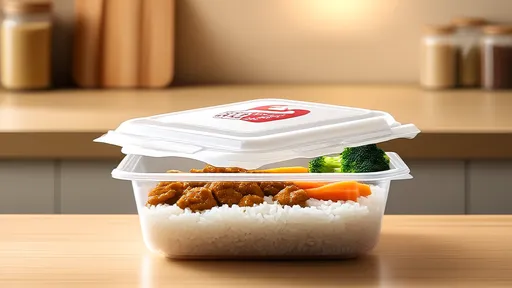Leftovers are a common sight in many households, often seen as a convenient way to minimize food waste and save time on meal preparation. However, the safety of consuming these stored meals, especially when it comes to meat dishes, has long been a topic of debate. Recent guidelines suggest that properly refrigerated meat-based dishes can remain safe for consumption for up to three days, provided they are handled and stored correctly. This revelation offers a practical solution for those looking to balance convenience with food safety.
The key to extending the shelf life of meat-based dishes lies in understanding the science behind food spoilage. Bacteria thrive in environments where temperatures are between 40°F and 140°F, commonly referred to as the "danger zone." When cooked meat is left at room temperature for extended periods, these microorganisms multiply rapidly, increasing the risk of foodborne illnesses. Refrigeration slows down bacterial growth significantly, but it doesn’t stop it entirely. This is why even refrigerated meat-based dishes have a limited window of safety.
Proper storage techniques play a crucial role in maintaining the quality and safety of leftovers. Meat dishes should be transferred to shallow, airtight containers within two hours of cooking. This allows for quicker cooling and prevents the growth of harmful bacteria. Dividing large portions into smaller containers can further enhance cooling efficiency. It’s also advisable to label containers with the date they were stored, ensuring that older items are consumed first. These simple steps can make a significant difference in preserving the integrity of the food.
While refrigeration can keep meat-based dishes safe for up to three days, not all meat dishes are created equal. Factors such as the type of meat, cooking method, and additional ingredients can influence how well the food holds up. For instance, dishes with high acidity, like those containing tomatoes or vinegar, may last slightly longer due to their natural preservative properties. On the other hand, creamy or dairy-based sauces can spoil more quickly, even when refrigerated. Being mindful of these nuances can help in making informed decisions about which leftovers to prioritize.
Reheating leftovers properly is just as important as storing them correctly. Meat dishes should be heated to an internal temperature of at least 165°F to kill any potential bacteria. Using a food thermometer is the most reliable way to ensure this temperature is reached. Microwaving can often result in uneven heating, so stirring the food midway through the process is recommended. If the leftovers appear discolored, have an off smell, or exhibit an unusual texture, it’s best to err on the side of caution and discard them.
The three-day rule for meat-based dishes is a general guideline, but it’s not absolute. Individuals with compromised immune systems, pregnant women, young children, and the elderly may want to exercise extra caution and consume refrigerated leftovers within one to two days. Additionally, freezing can extend the shelf life of meat dishes significantly, often up to three months, without compromising safety. However, the texture and flavor may degrade over time, so it’s wise to use frozen leftovers within a reasonable timeframe.
Cultural practices and regional food safety standards can also influence how leftovers are perceived and handled. In some cultures, reheating certain dishes multiple times is common, while others adhere strictly to the "one reheat" rule. Understanding these differences can foster better communication about food safety, especially in multicultural settings. Regardless of cultural background, the principles of proper storage and reheating remain universally applicable.
Public awareness campaigns and educational initiatives can go a long way in promoting safe leftover practices. Many people are unaware of the risks associated with improperly stored or reheated food, leading to preventable cases of food poisoning. Simple messages, such as the "three-day rule" for meat-based dishes, can be easily incorporated into community health programs or even school curricula. Empowering individuals with knowledge can help reduce foodborne illnesses and promote healthier eating habits.
In conclusion, while meat-based dishes can be safely stored in the refrigerator for up to three days, this requires diligent attention to storage and reheating methods. By following best practices, households can enjoy the convenience of leftovers without compromising on safety. As with many aspects of food preparation, a little knowledge and care can go a long way in ensuring that meals remain delicious and safe to eat.

By /Aug 11, 2025

By /Aug 11, 2025

By /Aug 11, 2025

By /Aug 11, 2025

By /Aug 11, 2025

By /Aug 11, 2025

By /Aug 11, 2025

By /Aug 11, 2025

By /Aug 11, 2025

By /Aug 11, 2025

By /Aug 11, 2025

By /Aug 11, 2025

By /Aug 11, 2025

By /Aug 11, 2025

By /Aug 11, 2025

By /Aug 11, 2025

By /Aug 11, 2025

By /Aug 11, 2025

By /Aug 11, 2025

By /Aug 11, 2025